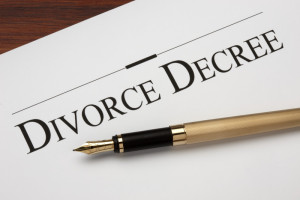Post Judgment Motions
What Are the Different Types of Post Judgment Motions?
There are several different types of post-judgment motions, but the most common are motions for new trial, motions to vacate, and motions to set-aside.

Generally, a court will grant a new trial under the following circumstances: an abuse of discretion by the court which prevented a fair trial, some accident or surprise that the parties had no reason to expect, newly-discovered evidence which has a probable chance of changing the outcome of the trial, insufficient evidence to justify the court’s decision, or the court’s decision violates the law. The moving party may have to attach declarations or exhibits in support of its motion.
The court then will set a hearing and make its decision sometime after the hearing. If the court chooses not to render a decision within a set time period, the motion is considered denied. However, the judge can grant the motion in whole or in part, and must describe in writing its reasons for granting the motion. If a new trial is granted, then it is as if the previous trial never occurred. The parties must relitigate the issue or issues per the court’s order.
Motion To Vacate
For a motion to vacate and enter a different judgment, the moving party must show the court that the judgment conflicts with the statement of decision. The statement of decision sets forth the reasons the court ruled the way it did; thus, for a motion to vacate and enter a different judgment, there must be some conflict between the reasons for the court’s decision and the judgment.
Motion To Set-aside
A motion to set-aside means that the moving party should be relieved of an order, dismissal, or judgment because of some mistake or excusable neglect. This motion is appropriate when the moving party misunderstands the facts of a case, or the legal consequences of his or her actions. A set-aside motion may also be granted if the other party intentionally conceals or destroys evidence in a way that harms the moving party’s case.
Wallin & Klarich Can Help

If you or someone you know is dissatisfied with the judgment of the family law court, contact a Southern California family law lawyer to discuss your options. You have a brief period of time to make a post-judgment motion, so do not delay. A family law attorney can review the trial transcripts, research the law, and advise you whether you have valid grounds for a post-judgment motion or appeal.
Family law can be complicated, so consult with a good family law attorney as soon as possible. At Wallin & Klarich, we have helped people with post-judgment motions for over 30 years. If you or someone you know wants to file a post-judgment motion, you will need an experienced Southern California family law attorney to closely review the facts and the law to see if your motion has merit.
With offices in San Bernardino, Riverside, Orange County, Los Angeles, San Diego, Torrance, West Covina, Ventura, Sherman Oaks and Victorville, an experienced Wallin & Klarich criminal defense attorney is available to help you no matter where you work or live.
Call (888) 749-7428 or fill out our online consultation form to get in contact with a legal professional today.
